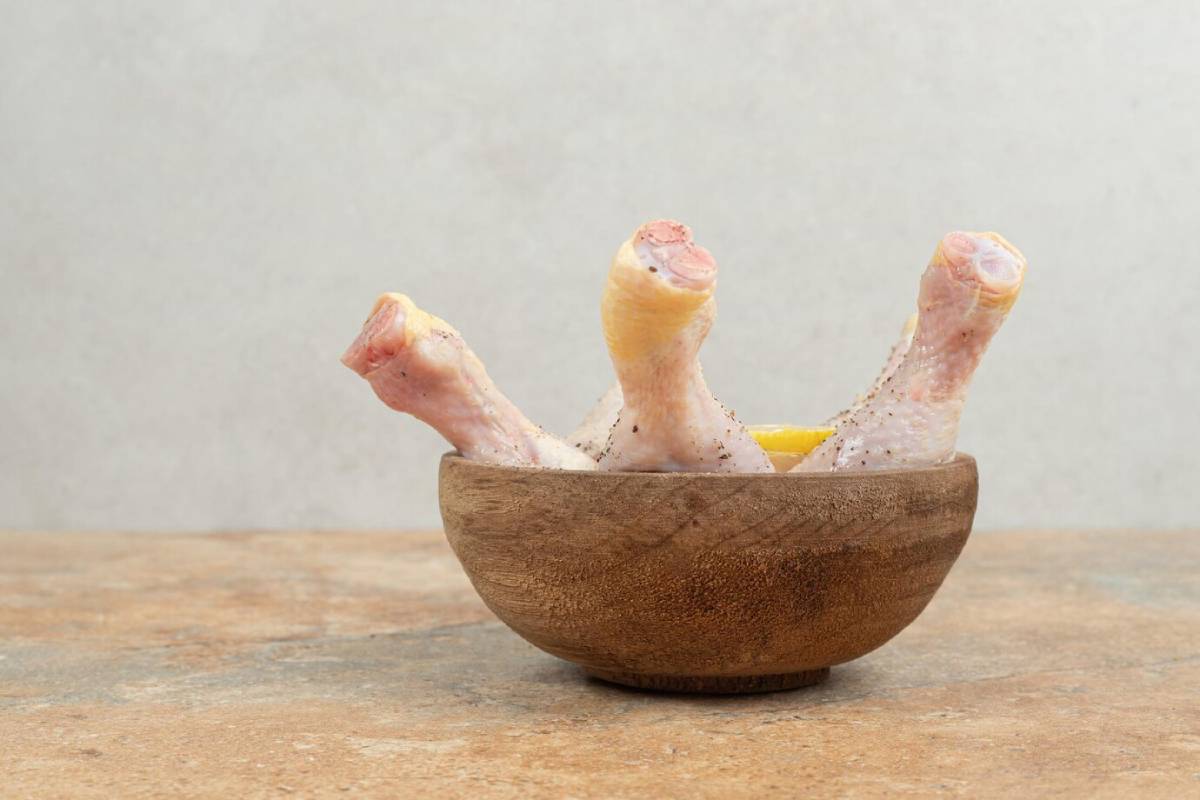
Homemade Diets for Toy Breeds: Nutrient Density Focus
Toy breeds like Chihuahuas, Yorkies, and Pomeranians are small. Their size can trick us into believing they need less food and nutrition than bigger dogs. But here’s the surprising bit: toy breeds need more calories per kilogram of body weight than big dogs. Their small bodies burn energy at a rapid rate, and that means every bite of food they eat needs to be packed with the right nutrients.
In this post, we’ll cover toy breed nutrition. We’ll look at homemade meal choices and share simple, budget-friendly recipes that are healthy and tasty. Whether you’re trying to help your dog maintain a healthy weight, boost energy levels, or just eat well, you’ll find the tips you need to get started today.
Understanding Toy Breed Nutrition
Why Toy Breeds Are Unique

Unlike larger dogs, toy breeds have faster metabolisms. This means they burn through calories quickly and are more prone to blood sugar dips, especially if meals are skipped.
Key characteristics of toy breed nutrition:
- High metabolic demand: Small bodies, big energy needs.
- Small stomachs: They need small but frequent meals.
- Dental concerns: Tiny teeth often need softer food options.
- Blood sugar stability: Hypoglycaemia is a common risk, especially in puppies.
Their meals need to be rich in protein, healthy fats, and micronutrients, all while being gentle on their digestion.
Core Nutritional Requirements
A balanced homemade diet should include:
- Protein: Lean meats, fish, and eggs
- Fat: Healthy oils like flaxseed, fish oil, or coconut oil
- Carbohydrates: Cooked grains or root vegetables in moderation
- Fibre: Small amounts of vegetables for digestion
- Calcium and phosphorus: Crucial for bones—especially in growing or ageing dogs
- Vitamins & minerals: Often from supplements or finely chopped veg
Tip: Talk to a vet or pet nutritionist before changing your dog’s diet. This helps make sure the calcium and phosphorus ratios are right.
Benefits of Homemade Food for Toy Breeds
Homemade diets aren’t just about cutting out processed food—they’re about putting control back in your hands.
Here’s what you gain:
- Customisation: Tailor meals to your dog’s exact size, age, and health needs.
- Freshness and quality: You know what’s going into every bite.
- Fewer preservatives and fillers: Many small dogs react poorly to additives in commercial kibble.
- Better palatability: Picky eaters often respond well to home-cooked meals.
And if your dog suffers from allergies or chronic stomach upset? Homemade food could be a game-changer.
Ingredients to Embrace (and Avoid)
Nutrient-Dense Ingredients to Include

To ensure your toy breed gets what they need from a small portion size, focus on nutrient-dense whole foods:
- Lean protein: Chicken, turkey, beef, lamb, salmon
- Eggs: A complete protein and source of essential fats
- Organ meats: Liver or kidney in small amounts for vitamin A and iron
- Pumpkin or sweet potato: Great for fibre and beta-carotene
- Quinoa or brown rice: Gentle carbs with added nutrients
- Blueberries and carrots: Antioxidant-rich and dog-safe
Tip: You could try incorporating raw foods into your pet’s diet.
Ingredients to Avoid for Toy Breeds
Toy breeds are more prone to toxicity from even small amounts of harmful ingredients.
Be extra cautious with:
- Onions and garlic (in any form)
- Grapes and raisins
- Chocolate and caffeine
- Xylitol (a sugar substitute)
- Fatty cuts of meat or fried foods
- Cooked bones (they can splinter easily)
Always check an ingredient’s safety before introducing it.
Sample Homemade Recipes for Small Dogs
Let’s get into the kitchen. These recipes are designed for nutrient density, ease of digestion, and small portion sizes.
1. Mini Protein Power Bowl
Ingredients:
- 100g lean ground turkey
- ¼ cup cooked quinoa
- 2 tbsp grated carrots
- 1 tbsp finely chopped spinach
- ½ tsp fish oil
Instructions:
- Cook the turkey until fully browned.
- Stir in cooked quinoa, carrots, and spinach.
- Let it cool and drizzle with fish oil before serving.
Benefits: Protein-rich, supports skin and coat health, great for active pups.
2. Chicken & Pumpkin Comfort Stew
Ingredients:
- 100g shredded chicken breast
- ¼ cup cooked pumpkin puree (no sugar)
- 1 tbsp green peas
- 1 tsp ground eggshell or dog-safe calcium powder
- Dash of turmeric (optional)
Instructions:
- Combine all ingredients in a pot with a little water.
- Simmer gently for 10 minutes until well-mixed.
- Cool to room temperature before serving.
Benefits: Soothes digestion, supports joints, easy on the teeth.
3. Salmon & Sweet Potato Mash
Ingredients:
- 75g cooked salmon (no bones or skin)
- ¼ cup mashed sweet potato
- 1 tbsp blueberries
- ½ tsp coconut oil
Instructions:
- Mash sweet potato and mix with flaked salmon.
- Stir in blueberries and coconut oil.
- Serve slightly warm or at room temperature.
Benefits: Omega-3s for brain and heart health; antioxidant boost.
Feeding Tips for Toy Breeds
Meal Frequency
Small breeds often do best with 2–4 small meals per day, especially those prone to low blood sugar.
Portion Control
Overfeeding is easy with small dogs, and obesity can lead to joint problems and heart issues. Use a kitchen scale to measure ingredients and track your dog’s weight weekly.
Example: A 2kg dog might only need 150–200 calories a day, depending on activity level.
Introducing New Foods
Always introduce new foods slowly. Try mixing new meals with their existing food over 4–7 days to avoid tummy upsets.
Supplementation and Safety
Should You Add Supplements?
Most homemade diets benefit from added vitamins and minerals. Especially:
- Calcium (if not using raw meaty bones)
- Omega-3s (fish oil or flaxseed)
- Multivitamins formulated for dogs
Avoid human supplements unless approved by a vet—they can cause overdoses or imbalances in dogs.
Working with a Canine Nutritionist
If you’re planning to feed homemade meals long-term, it’s worth having a vet or canine nutritionist review your recipes. They can ensure your dog’s nutritional needs are fully met and recommend tailored supplements.
Common Mistakes to Avoid
Even with the best intentions, homemade feeding can go wrong if the basics are overlooked.
Watch out for:
- Unbalanced meals: Not enough calcium or essential fats
- Relying on the same recipe every day: Variety helps prevent nutrient gaps
- Overfeeding treats or table scraps
- Not adjusting for activity level or age
Consistency and balance are key to long-term health.
Small Dogs, Big Nutritional Needs

Feeding a toy breed isn’t just about portion size—it’s about maximising nutrition in every mouthful. These little dogs bring huge personalities and a lot of joy into our homes, and they deserve a diet that supports their energy, health, and longevity.
Homemade dog food lets you control your dog’s health. You can cut out unwanted additives and create meals that fit your dog’s needs perfectly. It may take a bit more effort upfront, but the long-term benefits are well worth it—for you and your furry companion.
Ready to start? Try one of the recipes above, talk to your vet, and begin your journey toward a healthier, happier pup.
What’s your go-to recipe for your toy breed? Share your tips in the comments below, and don’t forget to subscribe for more pet nutrition guides and recipes!


